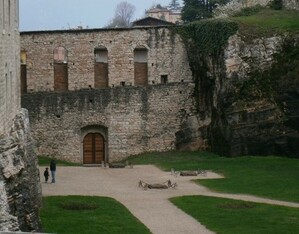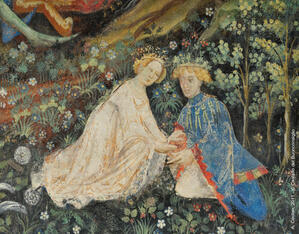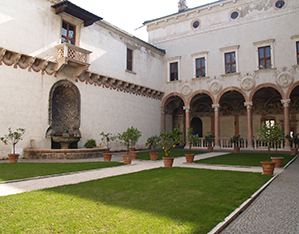This Castle/Royal Palace was the residence of the Prince-Bishops of Trento, its massive structures and high walls concealing gardens of various origins and souvenirs of our history.
In the late 14th century, Bishop George of Liechtenstein equipped this originally 13th-century castle with a garden. In the second half of the 15th century, Prince-Bishop John Hinderbach paid special attention to the garden. Leading up to the Council of Trent, it was Bishop Bernardo Cles who, between 1527 and 1536, commissioned the magnificent “Magno Palazzo” wing, as well as a new arrangement of the gardens, in particular the “zardino de sotto” and the small “zardino de sora” (the former hanging garden, which today is the Cortile dei Leoni). The gardens we see today were modified in the third quarter of the 18th century, almost completely stripped away during the Habsburg period, and then restored by Giuseppe Gerola (first Superintendent of Italian Trento) in the 1920s, at the same time as the monumental complex was restored and the Museum established. Nowadays, the lower garden, with its clear geometric composition, bordered by a pergola on columns with heirloom vines and recent roses, is divided into two areas: one with a simple lawn and shaped hedges, the other, after the access avenue to Palazzo Magno, is organized in flower beds, with osmanthus plants in the centre and topiary yew trees in the corners, arranged around a circular space that once housed a Fountain of Neptune. The original pomarium, still planted with fruit trees, sits beyond a tall crenellated wall.




